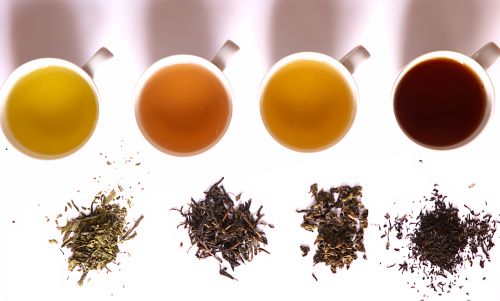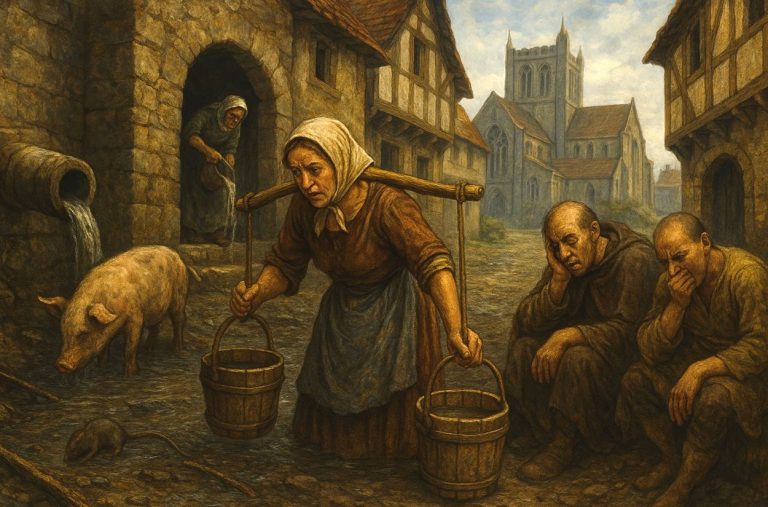

Tea is both ordinary and extraordinary. It connects continents, sustains economies, and anchors traditions. Yet every harvest now comes with uncertainty.

By Matthew A. McIntosh
Public Historian
Brewminate
Introduction: Tea at a Crossroads
Few crops are as deeply woven into human life as tea. It is a drink of ritual and rest, a trade good, a cultural emblem, and a source of livelihoods for millions. Yet the quiet leaf that once symbolized stability is becoming a marker of turbulence.
As Mongabay notes, climate change is unsettling tea from soil to cup. Yields are dropping, flavors are shifting, and entire landscapes are becoming unreliable. What once felt timeless is suddenly fragile.
The Fragility of a Plant
Tea is not a forgiving crop. Camellia sinensis thrives only in a narrow climate band, preferring steady rainfall, cool nights, and predictable seasons. Push it beyond those limits and it resists, showing its discontent in lower yields and altered taste.
Even slight variations in heat or soil moisture affect its chemical composition. That fragility is precisely what makes the leaf so valuable, terroir can be tasted in the cup, but also what makes it so vulnerable.
South Asia: Heat, Floods, and Vanishing Certainty
India’s tea heartlands have always depended on the rhythm of the monsoon. In Assam, that rhythm is breaking. Temperatures are rising, pests are thriving, and rain either arrives all at once or not at all. Farmers who once predicted the season with confidence now gamble each year on whether their fields will drown or dry.
Darjeeling tells a more subtle story. The teas that bear its name are prized for their muscatel notes, a delicacy shaped by altitude and steady weather. But those notes are fading. Chemical analyses confirm what growers taste: heat and erratic rain are changing the leaves at the molecular level. A brand built over centuries can unravel in a single generation.
Sri Lanka, long synonymous with Ceylon tea, faces its own uncertainty. Erratic rainfall has disrupted plucking schedules, while rising production costs erode profits. Smaller estates, without access to irrigation or new cultivars, are the first to falter. Once they collapse, they rarely return.
These losses are not just economic. In towns across the hills, tea is the employer of record, the source of wages that fund schools and medical care. When yields drop, so does everything else. Climate change does not just rewrite the harvest calendar. It reshapes community life.
East Asia: Seasons in Flux
China’s vast tea regions are shifting unevenly. In Zhejiang, rainfall has grown unpredictable, sometimes pushing harvests earlier, sometimes delaying them. Shading techniques, once used sparingly, are increasingly necessary to protect plants from scorching sun.
Japan’s story is similar, but with cultural weight that magnifies each change. The Glasgow Science Centre has observed that warming trends are moving spring flushes earlier, altering the character of sencha. For a country where the tea ceremony embodies precision and tradition, the idea that the leaf itself might shift beyond recognition carries symbolic shock.
Africa: Kenya at the Edge
Kenya, the world’s third-largest exporter, stands in a precarious position. Tea provides a major share of foreign exchange, yet its stability is unraveling. Farmers report alternating droughts and downpours that slash yields unpredictably.
For smallholders, the risks are devastating. One poor harvest can mean school fees unpaid, medical care deferred, meals cut back. The fragility of tea cascades into the fragility of households. And when enough households falter, entire local economies strain to hold together.
New Frontiers: Tea Beyond Tradition
Yet climate change is not only closing doors. It is opening new ones in places where tea was once unthinkable. STiR Coffee and Tea reports new experiments in Scotland, Canada, and the U.S. Pacific Northwest, regions where warming has created microclimates suitable for cultivation.
These new terroirs delight experimenters and boutique buyers. But they also raise uneasy questions. Can tea transplanted to northern fields carry the same cultural resonance as tea grown in Darjeeling, Uji, or Kericho? Expansion in the global north may soften the blow for consumers while leaving traditional producers, often in the global south, exposed to ruin.
Flavor and the Science of Taste
The changes are not only agricultural. They are sensory. Heat and drought alter levels of polyphenols, caffeine, and aromatic compounds, reshaping the chemistry of the leaf itself. Darjeeling may lose its muscatel edge, Assam may grow harsher, Chinese greens less delicate.
For connoisseurs, the difference is striking. For casual drinkers, the shift is gradual, creeping over decades until the tea in the cup is no longer what it once was. Quality becomes blurred, and with it, value.
Livelihoods and Inequality
Behind every leaf are farmers, pickers, and processors, millions worldwide. As yields falter, their incomes shrink. For women, who make up a large share of tea laborers, the losses translate directly into food insecurity and reduced opportunities.
This inequality is stark. Wealthy nations may enjoy boutique tea from new latitudes, but smallholders in Sri Lanka or Kenya bear the cost of climate volatility. As one academic review notes, the global tea economy magnifies existing disparities. The poorest producers face the sharpest blows, while the wealthiest consumers remain buffered.
Searching for Adaptation
Solutions exist, but they feel like patches rather than cures. Breeding drought-resistant cultivars, building irrigation systems, and shifting plucking times all offer reprieve. Some estates experiment with intercropping to buffer risk. Others explore circular economy practices, as outlined in Mongabay’s report, where waste is minimized and emissions reduced.
Yet adaptation has limits. No amount of shading or irrigation can fully shield a crop from relentless warming. The carbon footprint of a single cup reminds us of the paradox: the very industry fighting to survive is also a contributor to emissions that threaten it.
📊 Data Snapshot: Tea and Climate Change
- Global workforce: Over 13 million people depend directly on tea cultivation.
- Top producers: China, India, Kenya, and Sri Lanka account for about 75% of global supply.
- Climate risk: Studies project 18–26% yield declines in major tea-growing regions by 2050 if warming continues unchecked.
- Economic stakes: Tea exports contribute over 20% of Kenya’s foreign exchange earnings; Sri Lanka’s tea industry supports around 2.5 million people.
- Environmental impact: The carbon footprint of one cup of tea is about 30g CO₂e, a reminder that production contributes to the very problem threatening it.
Conclusion: The Future in a Cup
Tea is both ordinary and extraordinary. It connects continents, sustains economies, and anchors traditions. Yet every harvest now comes with uncertainty. Farmers wait for rain that may not fall, or brace for storms that come too soon. Consumers sip cups that taste subtly different from the year before. The comfort of tea has always been its stability, the sense that no matter where you are, the leaf remains familiar. Climate change has begun to dissolve that stability. What remains is a future where each sip carries not only the flavor of the plant but the unmistakable aftertaste of a warming planet.
Originally published by Brewminate, 09.12.2025, under the terms of a Creative Commons Attribution-NonCommercial-NoDerivatives 4.0 International license.


